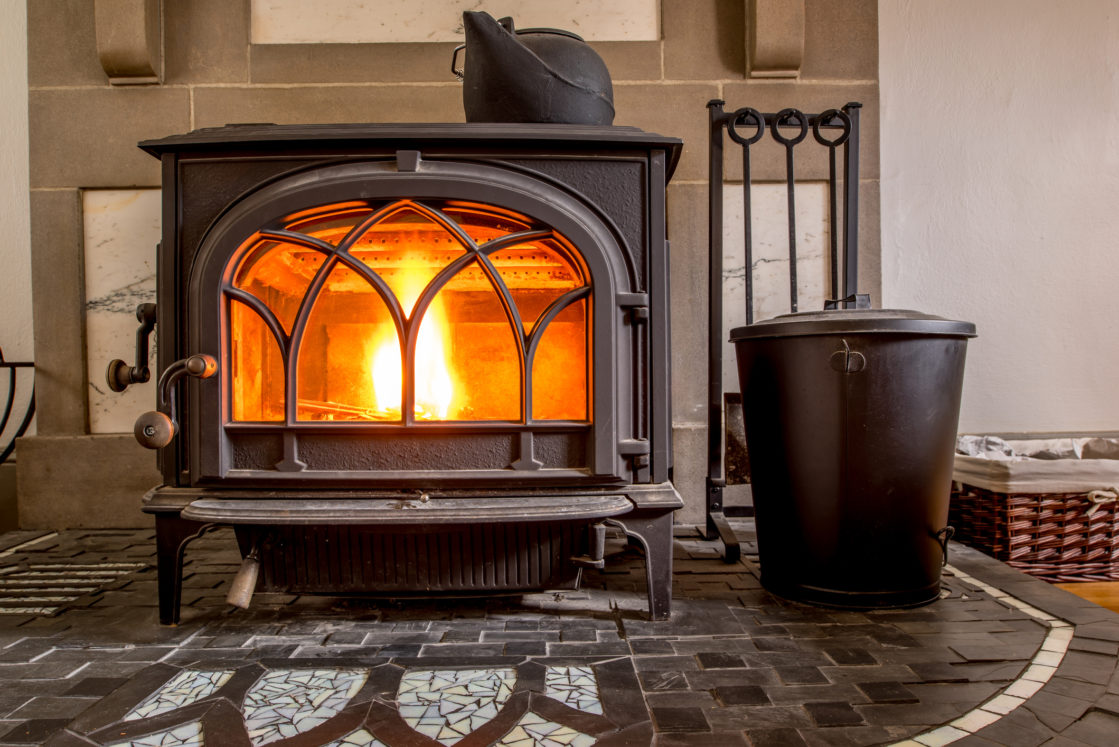Wood burning stoves can provide years of safe, affordable heat if used properly. However, as with any heating system, they do come with some safety concerns you should be aware of. Here’s what you need to know about the proper installation, maintenance and use of your stove to ensure your peace of mind.
SELECTING A STOVE
When selecting a wood burning stove, be sure it is made of sturdy, suitable material such as cast iron or steel. Look for stoves listed by Underwriters Laboratories (UL), or visit their website at www.ul.com for more information.
CLEARANCE
All wood burning appliances need 36” of clearance from any combustible material. A woodstove should also be placed on a non-combustible fire resistant base extending 18” from the front of the appliance. Clearances less than 36” require installation of a non-combustible material between the stove and any combustibles.
EFFICIENCY
Creosote buildup is the most common cause of fire loss. Creosote is most likely to form when dense smoke makes contact with a cool chimney surface. Being highly flammable, its buildup creates a dangerous situation. It’s also important to know, creosote is a by-product of HOW you burn, rather than WHAT you burn. Even the best seasoned hard wood forms large amounts of creosote if it is burned in a “damped-down” stove. When heating with wood, use a modest fuel load and leave the air inlet damper at least 1/4 open.
CLEANING
All wood burning systems require cleaning. Creosote should be cleaned when it reaches a thickness of a quarter inch or more. At the very least, chimneys and stove pipes should be cleaned once a year, ideally before the start of the heating season.
DISPOSAL OF ASHES
- Allow ashes to cool as long as possible before removal, or at least 24 hours after the fire has been extinguished
- Never store ashes in bags, cardboard boxes or plastic containers
- Place ashes in a fire safe metal container with a tight fitting metal lid – the lid reduces the possibility of oxygen reigniting a live ember or smoldering ashes
- Do not add anything combustible to the ash container
- Once ashes are transferred they should be wetted down to eliminate any hot spots
- Store the metal container far from any structures or combustibles and in a well ventilated area as ashes may contain live coals/embers which can emit carbon monoxide
- After the ashes have been sitting for a week or more, they can be safely disposed
In addition to these tips, keep an ABC fire extinguisher within easy reach of any wood burning appliance. Regardless of what heating system you choose, make sure you have smoke detectors installed in all bedrooms and areas of your home.
For more fire safety tips, click here.